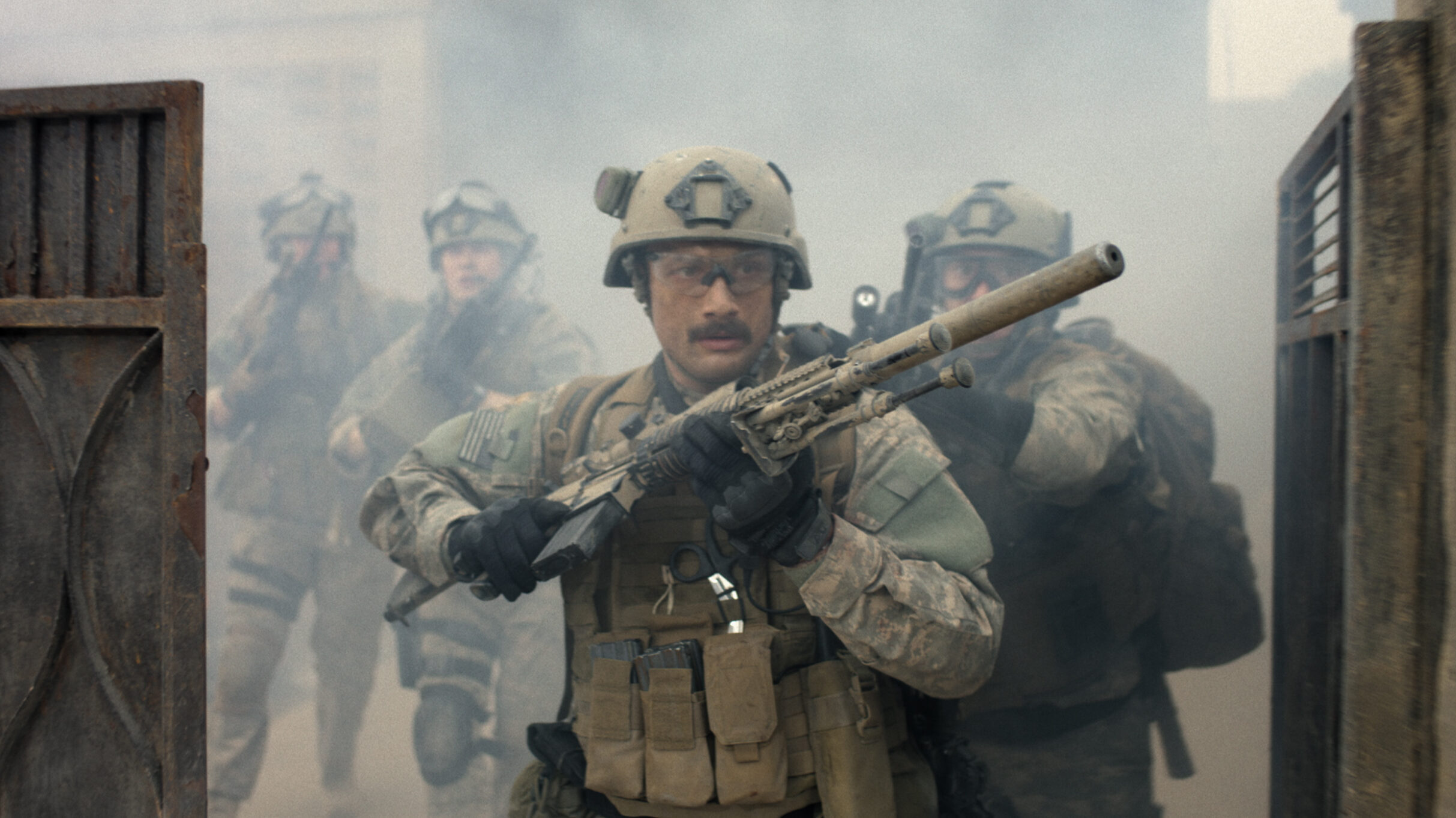Director: Alex Garland, Ray Mendoza
Writer: Ray Mendoza, Alex Garland
Stars: D’Pharaoh Woon-A-Tai, Will Poulter, Cosmo Jarvis
Synopsis: A platoon of Navy SEALs embark on a dangerous mission in Ramadi, Iraq, with the chaos and brotherhood of war retold through their memories of the event.
Ray Mendoza spent significant time with Alex Garland, his co-director on Warfare, when he was acting as a military consultant on Garland’s Civil War. While Civil War imagined a divided America through the eyes of photojournalists, Warfare is not imagined, it is remembered. An immersive cinéma-vérité recounting a mission Ray Mendoza (D’Pharaoh Woon-A-Tai) was a part of serving as a JTAC in 2006 in Iraq. Mendoza is committed to replicating the experiences of a group of Navy SEALs who were tasked with identifying al-Qaeda insurgents in Ramadi.
Unlike many a war movie, even those that recreate real events based on a living person’s experiences, Warfare isn’t interested in giving background or backstories to the soldiers involved. Mendoza and Garland show a pre-mission gathering around a video of Erik Pryde’s Ministry of Sound club hit “Call on Me.” What the audience sees is that the soldiers are young, pent up, and ready to go. Camaraderie is established and that’s all. Rank, specialty, and relationships unfold within the operation and the miasma of an unexpected IUD attack.
The lack of “characterization” is deliberate. Mendoza and Garland reiterate that the events happened as they are filmed and unless something was said by the soldiers during that time it wasn’t included. The audience has to sink or swim with the people they see on screen; there’s little time to judge any of the ethical issues, of which there are inherently many, nor is there space to bond with the soldiers. It’s war and you’re inside it.
Not knowing much about the men means they become a kind of “everyman” inside the pressure cooker. Will Poulter’s Officer in Charge, Erik seems collected and battle ready, but like the rest of his squad he’s barely able to keep it together once the chaos begins. The two armed translators who are tasked with keeping the Iraqi families whose house the squadron have decided to use as a vantage point for the operation are almost pushed as fodder into the fray. Tommy, a younger recruit played by Kit Connor, stands shocked, unable to work out what is going on. Cosmo Jarvis’ sniper Elliott makes jokes with his fellow sniper Frank (Taylor John Smith) to try to relieve the tension of looking down the scope at men gathering across the street. It is up to them to report if someone is “peeking or probing” suggesting they’re insurgents, or if they’re simply innocent residents going about their day. Joseph Quinn’s Leading Petty Officer, Sam, waits in another room. The wearing pressure of “hurry up and wait” during the surveillance is its own pressure cooker.
Warfare is replete with talented young actors. Charles Melton, Noah Centineo, Evan Holtzman, Henrique Zaga, Finn Bennett and actual Iraq veteran Alex Brockdorff are amongst the mix of SEALs, FSOs, ANGLICOs (Marines) in the cinematic real time operation. They’re each solid in the ensemble which favors the point of view of Ray who switches between communicator, stand-in field medic (along with Michael Gandolfini’s Lt. Macdonald), and interim 2IC.
The sound design, editing, and cinematography are top notch and there’s no doubting Warfare is a visceral experience as it moves through the chaos of a dangerous and desperate military situation. However, the authentic reproduction of the operation is both a boon and an impediment to the film. Mendoza and Garland so want the audience to experience events that they actively discourage consideration of them. It is all too easy to get caught up in the whirlwind of pain, fear, bravery, and “brotherhood” in propulsive war stories, that the focus excludes contextualizing whether that war was something soldiers should have been deployed in. The Second Gulf War, or the Iraq War, remains controversial as it was considered illegal by the United Nations and the cumulative cost in terms of civilian lives and the lives of the United States Military and its allies, plus the post invasion disorganization and monetary investment were widely condemned.

Warfare is a technical achievement par excellence; both raw and urgent. But once the adrenaline wears off and the movie reaches its coda, the questions begin to gather – the main being, “Why were they there in the first place?”






